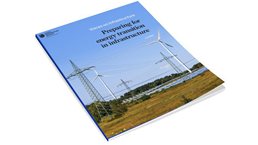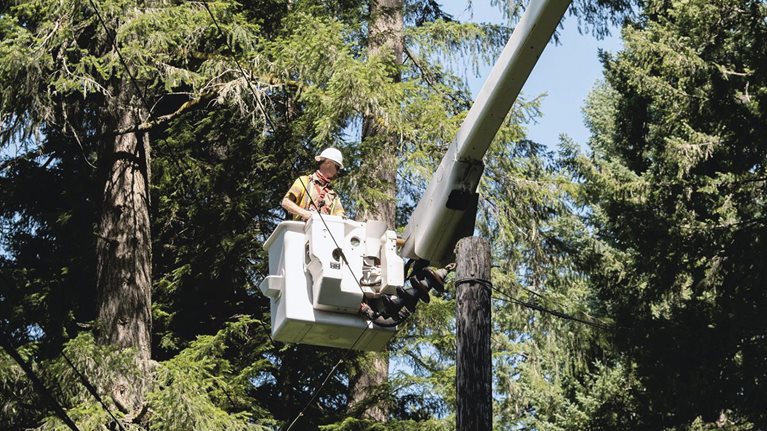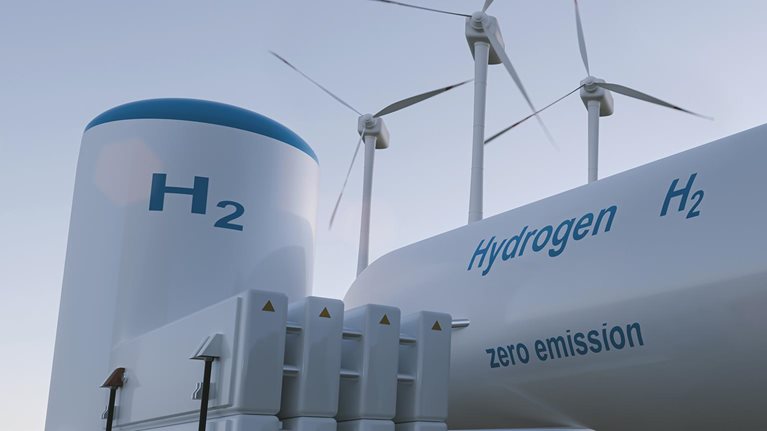Today, electric grids the world over are impacted by events and trends primarily linked with the move away from fossil fuels. On closer look, the effects of the energy transition typically fit into one of three major scopes: decentralization and decarbonization, long-term resilience, and evolving consumer behaviors.
Further complicating matters, electric grids are largely under cost and margin pressure and suffer from both an aging workforce and aging infrastructure. On this last point, our research shows grid operators working with asset infrastructures that go well beyond the projected life span of 30 to 40 years, and as much as five lifetimes in some extreme cases.
In this context, grid operators, owners, and other players in the broader energy ecosystem must determine where and how much to invest to prepare for the years to come.
The challenges of a changing electric grid
Preparing electric grids to respond to today’s challenges requires nuanced approaches. Operators and owners will need to consider the effects of three major scopes.
Flexibility in the face of decarbonization and decentralization
As emissions-reduction targets become increasingly ambitious on the back of landmark initiatives such as the Paris Agreement and the EU Green Deal, fossil fuels will continue to play a major role in the energy system through 2050, with oil demand likely peaking in 2029 and gas in 2037.1 That said, it is up to individual grid operators to manage the renewable-energy supply profile versus the fossil-fuel load profile.
The call for decarbonization has also driven the rise of new downstream elements such as lithium-ion batteries and electric vehicles, among others. While in principle these elements all serve the greater purpose of decarbonization, they also affect both overall demand- and peak-load profiles, further exacerbating the need for operators to provide flexibility. The demands on tomorrow’s grid will shift as more people plug into the system.
Similarly, there has been a shift toward the decentralization of the power system, which refers to the practice of generating energy off-grid and in proximity to where it is distributed, increasing the penetration of energy sources such as rooftop solar rather than more traditional power plants. As the number of nontraditional players increases, including individual consumers who install rooftop solar panels, so does demand for new services. Thus, some grid operators are changing from the traditional unidirectional power flow to an alternating bidirectional power flow.
Long-term grid resilience
Because of the gradual rise in temperature due to climate change, there has been an increase in the severity and frequency of extreme, or longtail, weather events. In response, regulators have prioritized the future stability of the power supply.
Several recent events have made grid operators increasingly likely to consider mitigation of the risks of climate change when planning their overall investments. Notable examples include Hurricane Harvey in 2017, which took out ten gigawatts of power-generating capacity and several hundred power lines.2 One year later, the Vaia windstorm in Italy caused more than €2.8 billion in losses. And most recently, the cold-weather power crisis in Texas highlighted the negative implications associated with not fully considering the destructive potential of extreme weather events.3
Evolving consumer behaviors
As the energy transition unfolds, the paradigm is shifting. The average consumer’s behavior regarding energy consumption has also started to change. Some traditional users of electricity are becoming so-called prosumers who produce, store, and sometimes sell back their own energy. This trend toward prosumerism implies challenges to the electric grid, especially when prosumers can and want to react to and influence the market.
As consumers increasingly expect reports around consumption with a focus on efficiency, many owners and operators are increasingly focused on quality of service, extending beyond the expectations of the service itself to include value-added services. Our conversations with operators and regulators around the globe reveal an increased focus on average outage duration for consumers, as determined by the System Average Interruption Duration Index (SAIDI), as well as a push to understand the drivers of any differences in reliability. Here, it’s worth noting that SAIDI numbers range from one to four digits, which at the very least suggests an opportunity to improve quality of service to consumers.
In the face of all these changes, grid operators will continue to be held accountable for the quality of service.

Voices on Infrastructure: Preparing for energy transition in infrastructure
Determining where and how much to invest
Responding to both short- and long-term electric-grid challenges requires integrated and coordinated investment and execution programs. However, identifying the right level of investment and where to allocate funds remains a problem that individual operators need to tackle, as determined by evolving market conditions.
Generally speaking, investments will fall into one of four key categories:
- expanding the grid’s capabilities to handle the increased need for supply- and demand-side flexibility
- renewing and improving the grid’s overall quality and resilience
- expanding operators’ abilities to respond to down-market needs by leveraging the extensions of the system (the new downstream)
- upskilling operators’ capabilities and teams (although this may be outside the scope of a major capital-investment plan)
Power-sector revenues are often dedicated first to covering the needs of existing grids, while investments in operations and reliability are often driven by changing regulations. The bulk of capital-expenditure investments, however, are made with the revenues from services provided. As an example, Europe is essentially leading the way in responding to the needs of electric grids, and the projected revenue pool in Europe could reach more than €150 billion by 2025. This offers some perspective on the potential capital expenditures for grid operators in other regions, which will likely follow similar patterns.
Coping with this increased volume and implied acceleration presents further challenges, many of which can be addressed through mechanisms such as the rise of energy-service companies, a proliferation of specialized start-ups, or even M&A—all aiming to assist grids with financing, solutions, or products.
The respective needs of grids, as well as their investment capacities, have seen the rise of energy-services companies with offerings for both B2B and B2C segments. This market is expected to grow by a CAGR of 10 to 20 percent over the next ten years, and the growth will likely be driven by four key factors, which mainly address the need for decarbonization and decentralization:
- Disaster resilience: Rising concerns about energy resilience are expected to increase the number of microgrids, requiring services for asset development, management, and maintenance.
- Need for backup power: Critical services, such as hospitals, and companies are willing to pay for extra capacity.
- Ability to handle complex loads: Changing energy mixes can sometimes require complex loads, often because of variable generation through renewables.
- Adaptable offerings: Energy services can easily be customized to a consumer’s energy demands, allowing the addressable market to include both large corporations and smaller companies.
Further, a thriving world of start-ups is aiming to target the energy ecosystem, especially in related sectors and technologies, while challenging conventional utility business models. Thinner boundaries in the new downstream sector have enabled these new market entrants to develop and deliver out-of-the-box energy-transition innovations, such as virtual power plants, potentially disrupting industries.
Finally, it is worth highlighting that M&A activity has been taking place in the transmission and distribution space, as financial and infrastructure funds, as well as private-equity investors, have identified the energy transition as a time of opportunity (exhibit). External investors have formulated different strategies (from minority stakes to full control) and are aided by their strong capital backing: the average investment increased fourfold from $0.4 billion in 2010 to $1.6 billion in 2020.4

In a diverse landscape with a variety of customer demands and consumption trends, the solutions to the challenges facing the electric grids of the future will also vary widely. This is the result of not only existing, quantified value propositions but also evolving energy policies and regulations and increased spending on R&D. Grid operators and regulators must clearly define their priorities and plan capital expenditures to align with these priorities.
This article first appeared in the July edition of the Global Infrastructure Initiative’s Voices on Infrastructure.

